Removal of ECG Artifacts Affects Respiratory Muscle Fatigue Detection-A Simulation Study
- PMID: 34451104
- PMCID: PMC8412097
- DOI: 10.3390/s21165663
Removal of ECG Artifacts Affects Respiratory Muscle Fatigue Detection-A Simulation Study
Abstract
This work investigates elimination methods for cardiogenic artifacts in respiratory surface electromyographic (sEMG) signals and compares their performance with respect to subsequent fatigue detection with different fatigue algorithms. The analysis is based on artificially constructed test signals featuring a clearly defined expected fatigue level. Test signals are additively constructed with different proportions from sEMG and electrocardiographic (ECG) signals. Cardiogenic artifacts are eliminated by high-pass filtering (HP), template subtraction (TS), a newly introduced two-step approach (TSWD) consisting of template subtraction and a wavelet-based damping step and a pure wavelet-based damping (DSO). Each method is additionally combined with the exclusion of QRS segments (gating). Fatigue is subsequently quantified with mean frequency (MNF), spectral moments ratio of order five (SMR5) and fuzzy approximate entropy (fApEn). Different combinations of artifact elimination methods and fatigue detection algorithms are tested with respect to their ability to deliver invariant results despite increasing ECG contamination. Both DSO and TSWD artifact elimination methods displayed promising results regarding the intermediate, "cleaned" EMG signal. However, only the TSWD method enabled superior results in the subsequent fatigue detection across different levels of artifact contamination and evaluation criteria. SMR5 could be determined as the best fatigue detection algorithm. This study proposes a signal processing chain to determine neuromuscular fatigue despite the presence of cardiogenic artifacts. The results furthermore underline the importance of selecting a combination of algorithms that play well together to remove cardiogenic artifacts and to detect fatigue. This investigation provides guidance for clinical studies to select optimal signal processing to detect fatigue from respiratory sEMG signals.
Keywords: ECG; EMG; MNF; SMR; biomedical signal processing; cardiogenic artifacts; fApEn; fatigue detection; muscle fatigue; neuromuscular fatigue; respiration; respiratory EMG; sEMG.
Conflict of interest statement
The authors declare no conflict of interest.
Figures




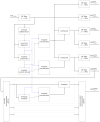

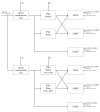







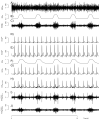




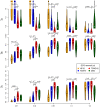
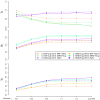

Similar articles
-
Comparison of algorithms to quantify muscle fatigue in upper limb muscles based on sEMG signals.Med Eng Phys. 2016 Nov;38(11):1260-1269. doi: 10.1016/j.medengphy.2016.09.009. Epub 2016 Oct 7. Med Eng Phys. 2016. PMID: 27727120
-
Adaptive filtering for ECG rejection from surface EMG recordings.J Electromyogr Kinesiol. 2005 Jun;15(3):310-5. doi: 10.1016/j.jelekin.2004.10.001. Epub 2004 Dec 25. J Electromyogr Kinesiol. 2005. PMID: 15763678
-
Elimination of electrocardiogram contamination from electromyogram signals: An evaluation of currently used removal techniques.J Electromyogr Kinesiol. 2006 Apr;16(2):175-87. doi: 10.1016/j.jelekin.2005.07.003. Epub 2005 Aug 31. J Electromyogr Kinesiol. 2006. PMID: 16139521
-
Comparative Review of the Algorithms for Removal of Electrocardiographic Interference from Trunk Electromyography.Sensors (Basel). 2020 Aug 29;20(17):4890. doi: 10.3390/s20174890. Sensors (Basel). 2020. PMID: 32872470 Free PMC article. Review.
-
Reducing Noise, Artifacts and Interference in Single-Channel EMG Signals: A Review.Sensors (Basel). 2023 Mar 8;23(6):2927. doi: 10.3390/s23062927. Sensors (Basel). 2023. PMID: 36991639 Free PMC article. Review.
Cited by
-
Analysis and applications of respiratory surface EMG: report of a round table meeting.Crit Care. 2024 Jan 2;28(1):2. doi: 10.1186/s13054-023-04779-x. Crit Care. 2024. PMID: 38166968 Free PMC article. Review.
References
-
- Piper H.E. Über die Ermüdung bei willkürlichen Muskelkontraktionen. Arch. Anat. Physiol. 1909;4:491–498.
MeSH terms
LinkOut - more resources
Full Text Sources
Research Materials
Miscellaneous

